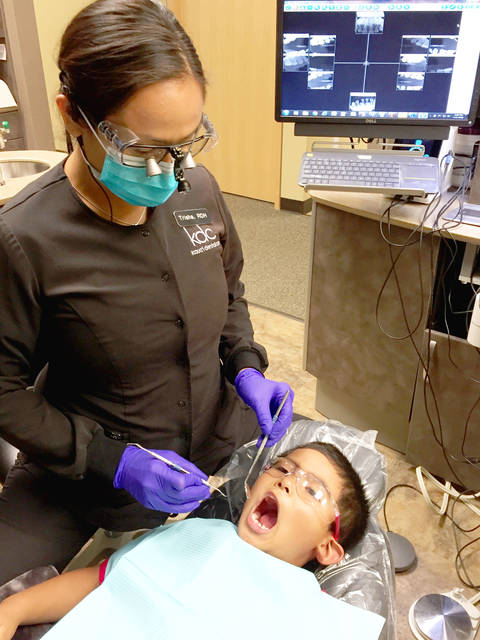LIHUE — A Department of Health survey released in 2016 confirmed Hawaii’s children have the highest prevalence of tooth decay in the nation.
That same survey, titled the “Hawaii Smiles” report, also showed a disproportionately higher prevalence of tooth decay among low-income children, especially those who live in Kauai, Hawaii and Maui counties.
But there is still reason to smile, said a Kauai dentist.
“Solving the problem of tooth decay begins with prevention and is a team approach that includes the dental office, the family and the community,” said Dr. Alan Ing, owner of Kauai Dental Care.
Kauai Dental Care provides two fluoride treatments to young patients for free, even if their dental insurance does not cover this service.
“Parents and family members play an important role on a day-to-day basis in helping to prevent decay,” Ing said. “We teach children and parents the correct way to brush and floss, and tell them about the foods and drinks that promote tooth decay.”
Matthew Shim, chief of the Family Health Services Division of the Hawaii Department of Health, said there are significant disparities in access to oral health services and, consequently, oral health that are well documented in Hawaii.
While these disparities are common in many states, they are magnified in Hawaii because of the geography of the island state, concentration of dental services on Oahu, and lack of fluoride in the water, a safe and proven decay prevention measure. As a consequence of these and other factors, Hawaii has a history of having some of the worst dental health in the country.
Candy and sweets are the obvious sugar sources that feed the bacteria in a mouth, but according to Ing, soda and juices, especially sports and power drinks high in sugar and acids, are common culprits in tooth decay.
“Our community can also play a role in the prevention of decay. For example, coaches and parents can serve healthier drinks to young athletes,” said dental hygienist, Nora Bernabe. “Together as a team, we can all work to reduce the rate of tooth decay in our children on Kauai.”
Despite ranking at the bottom of the nation for children’s oral health, Hawaii is taking steps to change the oral health status of Hawaii’s children and has become a pioneer in teledentistry.
Through a public-private partnership, the Hawaii Department of Health, Pacific Center for Special Care at the University of the Pacific’s School of Dentistry, the HDS Foundation and others are using a virtual dental home program.
The public-private partnership has successfully demonstrated the value of the teledentistry pilot project in West Hawaii over the past two years. As a result, the HDS Foundation, which contributed about $315,000 in the first two years of the pilot, this year will allocate an additional $319,000.
In addition, the HDS Foundation committed $125,000 for the first year of a three-year project on Maui to and increase the ability of the program to operate there five days a week. The Hawaii Medical Service Association Foundation is also contributing $125,000 to expand the successful program to Maui.






You do NOT need Fluoride, a neurotoxin and Endocrine disrupter, in your water. You need educated parents and good preventive dental healh services. You need Child Smile – http://www.child-smile.org.uk/
What an earth shattering revelation! NOT….poverty and healthy, organic fruits, vegetables and whole grains rarely co-exist. Parent and child education and food supplementation with healthy foods, not government cheese and white flour would be a good start.